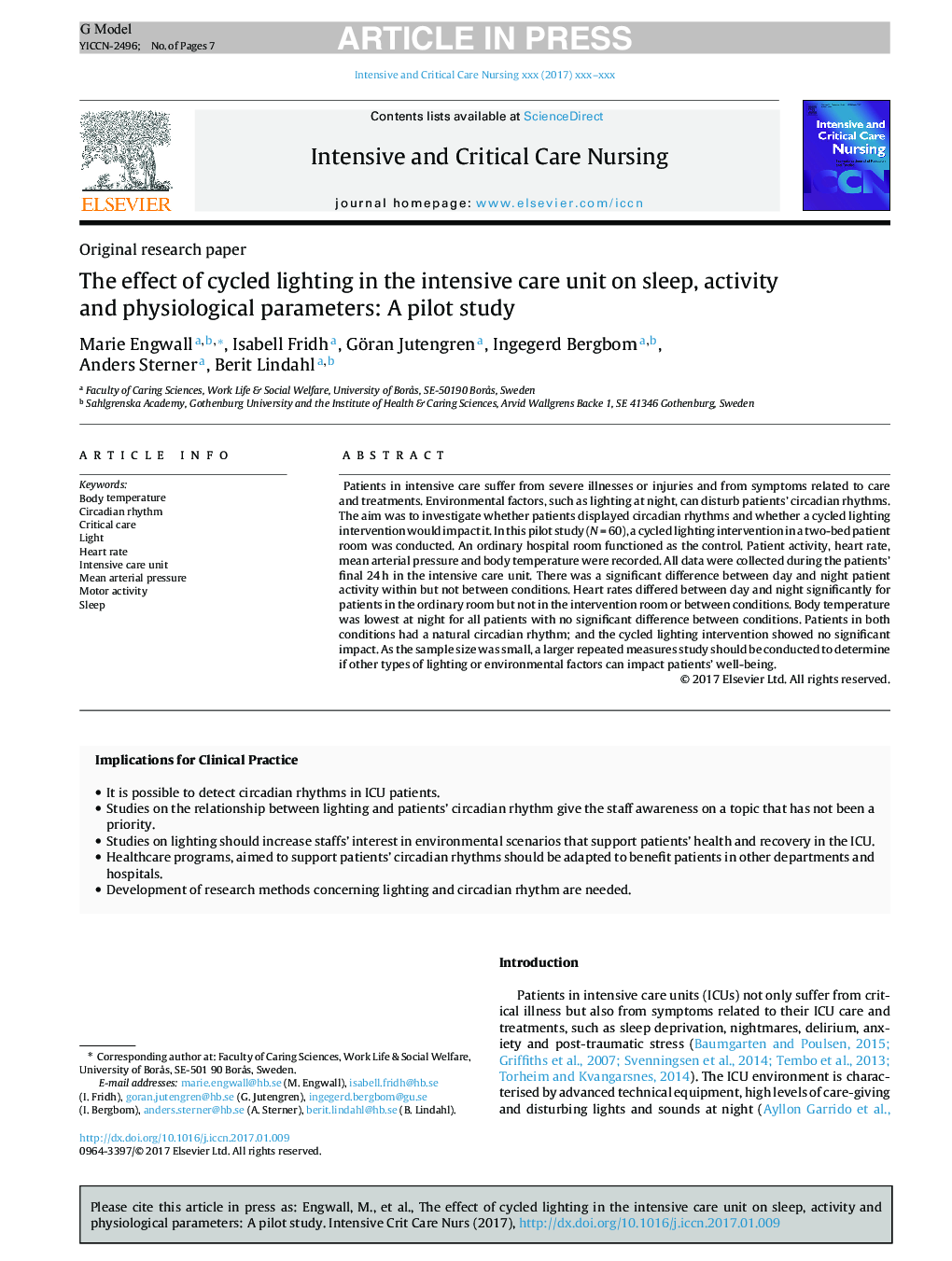| Article ID | Journal | Published Year | Pages | File Type |
|---|---|---|---|---|
| 5568248 | Intensive and Critical Care Nursing | 2017 | 7 Pages |
Abstract
Patients in intensive care suffer from severe illnesses or injuries and from symptoms related to care and treatments. Environmental factors, such as lighting at night, can disturb patients' circadian rhythms. The aim was to investigate whether patients displayed circadian rhythms and whether a cycled lighting intervention would impact it. In this pilot study (NÂ =Â 60), a cycled lighting intervention in a two-bed patient room was conducted. An ordinary hospital room functioned as the control. Patient activity, heart rate, mean arterial pressure and body temperature were recorded. All data were collected during the patients' final 24Â h in the intensive care unit. There was a significant difference between day and night patient activity within but not between conditions. Heart rates differed between day and night significantly for patients in the ordinary room but not in the intervention room or between conditions. Body temperature was lowest at night for all patients with no significant difference between conditions. Patients in both conditions had a natural circadian rhythm; and the cycled lighting intervention showed no significant impact. As the sample size was small, a larger repeated measures study should be conducted to determine if other types of lighting or environmental factors can impact patients' well-being.
Keywords
Related Topics
Health Sciences
Medicine and Dentistry
Anesthesiology and Pain Medicine
Authors
Marie Engwall, Isabell Fridh, Göran Jutengren, Ingegerd Bergbom, Anders Sterner, Berit Lindahl,
